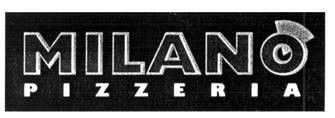The proverbial brand owner's guidebook became a little bigger in 2022. Developments in practice opened new avenues for securing and enforcing trademark rights over the past year, including an "accelerated" path to trademark registration and additional guidance for invalidating bad faith registrations.
At the same time, notable complications emerged with the adoption of Quebec's new French language law, Bill 96, and its significant amendments to Québec's Charter of the French Language. New requirements imposed by Bill 96 are on the horizon, adding a layer of complexity to the selection, advertising, and use of English (and other non-French) trademarks in Canada.
The following article highlights some of the most important new laws, cases, and practice directions from 2022 that brand owners should be aware of when doing business in Canada.
Table of contents
Notable Canadian trademark cases
- Rightful owners can win fights against stolen trademarks
- The importance of controlling your licensees
- Obvious knock-off products are just as illegal as deceptive ones
- Place names are often not registrable trademarks
Key developments in Canadian trademark practice
- Pilot project launched to reduce backlog for pending applications
- New options for challenging "official marks"
Legislative developments
- Quebec's new Bill 96 imposed additional French-language
requirements for trademarks
Notable Canadian trademark cases
1. Rightful owners winning fight against stolen trademarks
When "bad faith" was added as a stand-alone basis to invalidate registered trademarks in 2019, many wondered how the term "bad faith" would be defined under the case law.
With 2022 delivering the first two successful "bad faith" cases, we now have some guidance as to what factors can constitute "bad faith."
The first case involved a trademark troll who registered the logo of a popular foreign Chinese restaurant chain. One week after obtaining the registration, the troll approached affiliates of the rightful owners with demands which would come to include $1.5 million to obtain the registration. When the rightful owners refused, the unscrupulous registrant advertised the mark for sale online.
In Beijing Judian Restaurant Co Ltd v Meng, 2022 FC 743, Justice Furlanetto expunged the wrongfully-registered mark, finding it was filed in bad faith. In particular, the court found the registrant lacked any "legitimate commercial purpose" for registering the mark, and instead did so solely for the purpose of reselling it. The rightful owner was awarded costs to partly recompense the cost of the expungement proceeding.
The second bad faith case involved a licensee (technically a
sub-licensee) who registered the mark of the licensor.
The rightful owner of the mark was a U.S. company, Blossman Gas,
which oversaw a network of independent propane marketers and
conversion centers called ALLIANCE AUTOGAS. Blossman had been using
various ALLIANCE AUTOGAS trademarks in the US since at least 2009,
and licensing dealers in Canada to use the marks since at least
2012.
The wrongdoer, AAP, was a sublicensee of Blossman based in the province of Québec. While under contract as a sublicensee, AAP applied to register the following design that it was given permission to use:

The trademark application was made without AAP alerting either its direct licensor or Blossman itself.
Upon expiration of its sublicense agreement, AAP continued to do
business using various ALLIANCE AUTOGAS trademarks, including the
logo noted above. Blossman sued. The lawsuit argued that AAP
obtained its registration in bad faith, and that AAP was passing
off its services as those of Blossman by using the mark.
The court agreed. It found the mark was registered in bad faith,
principally as:
- AAP was a sublicensee at the time it applied to register the mark;
- The terms of the agreement to which AAP was bound identified Blossman as the sole owner of the name Alliance AutoGas and the various ALLIANCE AUTOGAS trademarks; and
- AAP did not inform its direct licensor or Blossman that it was filing an application to register the mark.
The registration was therefore expunged, with the court determining it was never validly registered.
Normally, a trademark registration provides a defence to both infringement and passing off. However, without a valid registration to rely on, AAP was found liable for passing off. Justice McHaffie determined that a registration that was always invalid could provide no defence. Accordingly, the court awarded Blossman $25,000 in damages including punitive damages, issued an injunction against AAP's future use of confusing marks, and ordered costs in excess of $31,000.
These cases provide some initial guidance as to what constitutes "bad faith." In particular, in his decision, Justice McHaffie noted six principles that govern the concept of bad faith in the EU and UK, noting that the experience of other jurisdictions in considering bad faith is of value to the development of Canadian law. Those principles are:
- good faith is presumed unless the contrary is proved on a balance of probabilities;
- bad faith includes not only dishonesty but also "some dealings which fall short of the standards of acceptable commercial behaviour observed by reasonable and experienced people in the particular area being examined";
- the purpose of bad faith as a ground of invalidity is to prevent abuse of the trademark system, either vis-à-vis the trademarks office or third parties;
- the determination of bad faith is an overall assessment taking into account all factors relevant to the particular case;
- the court or tribunal must ascertain what the applicant knew and then decide whether, in light of that knowledge, their conduct was dishonest or otherwise falls short of the standards of acceptable commercial behaviour, judged by ordinary standards of honest people and not the applicant's own standards; and
- consideration must be given to the applicant's intention.
2. Keep control of your licensees
On the topic of licensees, Milano Pizza Ltd v 6034799 Canada Inc, 2022 FC 425, is a cautionary tale about the importance of supervising those who use your trademarks.
The plaintiff in this case was the owner of the registered trademark MILANO PIZZERIA & Design, reproduced below, which it licensed to 38 independently owned pizzerias in Canada:

When one (alleged) former licensee continued to use this and other MILANO-formative trademarks after the expiration of an agreement between them, the plaintiff sued for infringement, passing off and depreciation of goodwill.
This strategy backfired, with the court invalidating the plaintiff's registration for non-distinctiveness owing to years of uncontrolled licensing.
A valid trademark license in Canada requires the licensor to exercise control "of the character or quality of the goods or services in association with which the trademark is used." In this case, the court's focus turned to the quality of the pizzas and customer service provided by the independent pizzerias.
While the agreements at issue required the use of certain pepperoni, cheese and sauce in all pizzas, the licensees were otherwise free to use their own recipes and ingredients. The licensor had no right to inspect the licensees. Moreover, the licensor did not monitor the quality of pizzas in any meaningful way such as through periodic or regular sampling.
Service was also uncontrolled. The licensor left the individual restaurants to determine how quickly food was delivered to customers, and did not resolve territorial disputes between the licensees if and when they arose.
As a result, more than 30 restaurants had effectively been using the trademark MILANO PIZZERIA & Design for many years in an uncontrolled manner. The court found the mark was therefore invalid, being non-distinctive of the plaintiff as well as all of the licensees.
Justice Fuhrer dismissed the licensor's action, expunged the MILANO PIZZERIA & Design trademark registration, and awarded more than $100,000 in costs to the defendant to partly compensate them for the legal fees they incurred.
3. Obvious knock-off products are just as illegal as deceptive ones
Infringers sometimes assume they can escape liability by adding a disclaimer that they are not associated with the rightsholder. As Lululemon Athletica Canada Inc v Campbell, 2022 FC 194 shows, that is not a safe assumption.
The defendant in this case sold counterfeit Lululemon merchandise through Facebook advertisements. From 2019 - 2021, the defendant, Campbell, regularly posted messages offering specific items, on condition that she received a sufficient number of orders before a specified date. Upon the closing date of the offer, the defendant ordered the merchandise from a Chinese supplier. The merchandise was sent to her home. She then invited the purchasers to come to her home to pick up the merchandise. In some cases, arrangements were made for delivery at the purchaser's home.
After her activity came to Lululemon's attention, the company sent the defendant cease & desist letters and arranged for an investigator to conduct a test purchase. Notwithstanding assurances to the contrary, the defendant continued selling counterfeit merchandise through private Facebook groups, following which Lululemon initiated its action.
Lululemon presented comprehensive evidence of infringement, including text messages sent by the defendant to co-conspirators detailing their modus operandi.
In retort, the defendant argued that there was no infringement because the goods were advertised as "high quality replicas." The court did not accept this argument, warning "[i]t is no defence to assert that the defendant added information intended to warn the consumer that the goods were not those of the plaintiff."
Justice Grammond ordered the defendant to pay $38,000 in compensatory and punitive damages, and issued an injunction prohibiting her from selling merchandise bearing Lululemon's trademarks.
4. Place names are often not registrable as trademarks
In Nia Wine Group Co, Ltd v North 42 Degrees Estate Winery Inc, 2022 FC 241, the question confronting the court was the meaning of "place of origin" within the context of the Trademarks Act. In general, a trademark that clearly describes a good's place of origin cannot be registered, the rationale being that it would be unfair for one trader to monopolize the name of a geographic location where others might also operate.
The trademark applicant in this case wished to register NORTH 42 DEGREES for use with "wine" and the "operation of a winery." It contended that a line of latitude should be registrable as it was not a "geographic name" (like the name of a city, for instance).
The court disagreed, and in so doing offered a definition of what "place of origin" entails:
The words "place" and « lieu » clearly have broad definitions and include specific references to places on the earth's surface, both general and abstract ... [I]n keeping with the purpose of section 12(1)(b), I find that the term "place of origin"/« lieu d'origine » should be interpreted to refer to any geographical designation.
The court refused the application to register NORTH 42 DEGREES. EQUATOR and GREENWICH were highlighted as further examples of marks that might be highly sought-after but unfair to monopolize.
This case certainly restricts the registrability of
place-related names going forward.
Key developments in Canadian trademarks practice
1. Pilot project launched to reduce backlog for pending applications
The delay from the filing of a trademark application to examination is currently an astonishing 46 months. In 2022, the Canadian Trademarks Office launched a pilot project aimed at reducing the time to examination for some pending trademark applications.
The project involved using artificial intelligence to conduct an automated, pre-examination assessment of all pending, not-yet-examined trademark applications to determine if the goods/services in each application complied with the pre-approved list in the Goods and Services Manual (the Manual) maintained by the Office. If so, the Office forwarded a letter to the applicant (or their agent) advising that examination of the application would be automatically accelerated.
If not, the Office forwarded a letter inviting the applicant to bring the goods/services into compliance with the pre-approved list in the Manual. While there was no deadline or requirement to take action in response to the Office's letter, there were at least two benefits for doing so:
- First, applications listing goods and services in compliance with the Manual are examined on an accelerated basis, meaning that examination will take place about 22 months after filing (instead of 46+ months);
- Second, amending applications before examination may avoid the issuance of an Examiner's Report. Indeed, the Trademarks Office noted that 70% of applications whose goods/services comply with the Manual proceed to approval without any Examiner's Reports.
2. New options for challenging "official marks"
"Official marks" are a unique feature of Canadian trademark law that can be cited by the Canadian Trademarks Office against an application to register a trademark. An official mark is a special kind of mark that can only be owned by a "public authority" which is an entity having some governmental oversight and which provides a benefit to the public.
As discussed in our article "It's official: Options for challenging "official marks" in Canada", applicants have several options available to them to overcome a citation of an official mark, including:
a) arguing against the citation;
b) obtaining a letter of consent from the owner of the official mark;
c) providing the Trademarks Office sufficient evidence to conclude that the public authority no longer exists (see part 4.7.14 of the Manual); and
d) challenging the validity of an official mark by bringing a proceeding in the Federal Court of Canada for judicial review of the Registrar's decision to give public notice of the official mark (or seeking a declaration that the official mark is invalid).
Recent amendments to the Trademarks Act (which are not yet in force) have codified option (c). Additionally, the amendments create a new mechanism allowing the Trademarks Office to declare that an official mark is no longer valid or enforceable in cases where the owner of the official mark is not a public authority or no longer exists. This remedy is currently only available through the Federal Court (option (d), above).
The Trademarks Office has published a draft Practice Notice regarding the Office's proposed implementation of these amendments. According to the draft, applicants wishing to take advantage of the new mechanisms can do so by submitting a request, which should be accompanied by evidence. If the Office is satisfied with the request, it will send a notice to the holder of the official mark requesting evidence of the holder's public authority status.
If the notice goes unanswered during the prescribed time period,
or if the evidence is insufficient to meet the relevant test, then
the status of the official mark will be amended to read
"inactivated."
Legislative developments
Quebec's new Bill 96 imposed additional French-language requirements for trademarks
Quebec is one of 10 provinces in Canada with a majority French-speaking population.
On June 1, 2022, Québec's National Assembly adopted Bill 96, which introduces significant amendments to the Charter of the French Language (RLRQ c C-11).
Of particular importance to brand owners are the following impacts of Bill 96:
- Restriction of "recognized trademark"
exception – Currently, brand owners may display
registered or common law trademarks on products,
commercial publications or public signs and commercial advertising
exclusively in a language other than French, unless a French
version of the mark has been registered (the "recognized
trademark" exception).
As of June 1, 2025, the scope of the "recognized trademark" exception will be restricted to registered trademarks only.
- Additional requirement for product
inscriptions–As of June 1, 2025, for
registered trademarks that appear on products, if the registered
trademark includes a generic term or a description of the product
in a language other than French, the generic term or description
will need to be (i) translated into French and (ii) appear on the
product or on a medium permanently attached to the product.
- More burdensome requirement for public signage
– For non-French signs appearing on the outside of a
building, there is currently an additional requirement to include
(in a permanent fashion) generic terms, slogans and/or other
indications in French describing the nature of the business on the
sign or on the face of the building.
As of June 1, 2025, the current requirement (referred to as the "sufficient presence of French" requirement) will be replaced by the more burdensome "markedly predominant" requirement, whereby the French language must have a greater visual impact than the text in the other language.
For more information, see our article discussing the impacts of
Bill 96: "Bill 96 and its impact on the French-language
requirements in Québec."
Stay tuned
Stay up to date on IP law developments in Canada in 2023 through our IP Updates and Rx IP Updates. Subscribe now to receive these in your inbox throughout the year.
If you have any questions or require further information on the notable developments and decisions discussed in this article, please reach out to the authors or any member of our Trademarks & Brand Protection team.
The preceding is intended as a timely update on Canadian intellectual property and technology law. The content is informational only and does not constitute legal or professional advice. To obtain such advice, please communicate with our offices directly.




